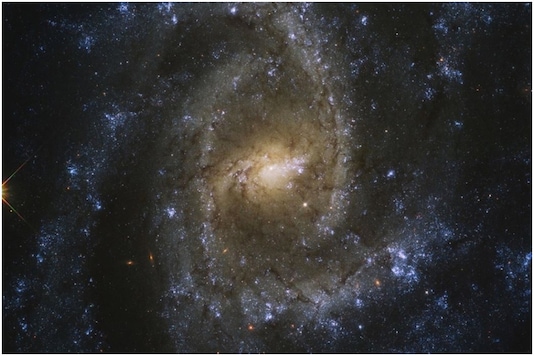Leaving the science aside, space is a truly magical spectacle to behold. From twinkling stars to planets like Venus to the hypnotizing images captured on telescopes of cosmos light-years away, there is an unending list of impressive cosmic bodies. One such image was recently released by NASA which has captured public attention immediately.
“#HubbleFriday The twisting patterns created by the spiral arms of the galaxy NGC 2835 create the illusion of an eye. This is a fitting description, since it’s located near the head of the constellation Hydra, the water snake,” read the caption.
As explained, the outer arms representing the bright blue regions indicate recent or ongoing star formation, whereas the centre is a black hole with a mass millions of times that of our Sun.
People were quick to acknowledge the beauty in this image. “Magnificent,” “magical,” “breath-taking” and other such comments flooded this post with over 1 lakh likes on Instagram.
This cosmic eye of the serpent has been discovered with the help of an image of the galaxy captured by the Hubble telescope. It is actually an optical illusion, not a literal eye of the serpent. As the spiral arms of the galaxy outstretch, Galaxy NGC’s coiling arms appear to be the serpent.
The apparent ‘eye’ is a part of the southern constellation of Hydra, centred near the head of the constellation also known as a water snake. This whole system is a part of Galaxy NGC 2835 which is half the width of our own home, the Milky Way Galaxy.
There is a central bar-like handle in the system which is supposedly very dense with stars. According to First Post, even though it’s not visible in the picture released, there is a massive black hole in the heart of this galaxy.
This picture is a part of a larger project going on at the Hubble observatory. The PHANGS-HST survey aims to build “first astronomical dataset charting the connections between young stars and gas.”
